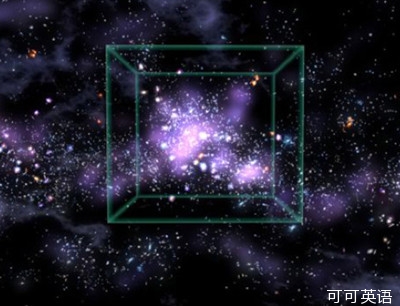(单词翻译:单击)
How did big galaxies get so big? A rare glimpse at a primordial galaxy undergoing a growth spurt may provide some answers.
银河为什么会变得如此巨大?科学家观察到一个原始星系的急剧膨胀,这次罕见的观测也许能提供答案。
The galaxy Himiko is named for a Japanese queen of the third century AD. Researchers peered into the galaxy using both the Hubble Space Telescope and the newly inaugurated ALMA telescope array in Chile. The galaxy is so distant that astronomers see it as it appeared just 800 million years after the big bang, when the universe was only about six percent of its present age.

Himiko 星系是以日本公元三世纪的女王命名。研究人员利用哈勃望远镜以及在智力新投入使用的阿尔玛望远镜阵列来观测此星系。它的距离如此遥远以至于天文学家判断它是大爆炸之后8亿年才出现的星系,当时宇宙只有目前年龄的6%。
At that early epoch, Himiko was already making new stars at a vigorous clip of about 100 per Earth year. The burst of star formation may be powered by a merger of three smaller galaxies—the detailed new observations show that Himiko is not one homogenous blob but three separate luminous clumps. The research has been submitted to the Astrophysical Journal.
在早期的时代,Himiko 就已经以有力的步伐(每年100颗的速度)制造新恒星。行星爆炸式形成的驱动力可能来自于3个较小星系的合并——详细的研究证明 Himiko 并不是单一的发光体,而是三个独立的发光团。这项研究发表在《天体物理学杂志》上。
The researchers say that their observations offer the first clear glimpse at how the most massive galaxies took shape, way back when the earliest stars and galaxies were lighting up the universe. And that should prove to be a very big deal.
研究人员表示,他们的观察让人们第一次清晰地看到了最大规模的星系是如何形成的,让人们回顾了最早的恒星和星系照亮整个宇宙的时刻。事实证明这非常具有影响力。
原文译文属可可原创,未经允许请勿转载!


